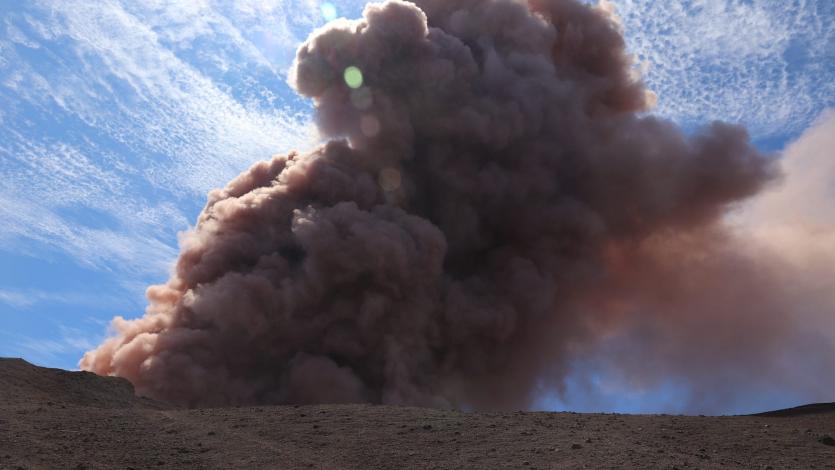In this photo released by U.S. Geological Survey, a plume of ash rises from the Puu Oo vent on Hawaii's Kilaueaa Volcano after a magnitude 5.0 earthquake, on May 3, 2018 in Hawaii Volcanoes National Park /AP
 JULY 3rd 2019
JULY 3rd 2019
By Patryk Krych | The World Daily
Hawaii Volcanoes Eruption Threat, Alert Levels Rise
United States Geologists were prompted into raising the alert levels in Hawaii to yellow, after the Mauna Loa volcano in Hawaii has seen and been hit by, since October of last year, at least 50 small earthquakes that have raised the chances of potential danger, scientists explained on Tuesday.
The world’s largest presently active volcano of Mauna Loa did not appear to be on the verge of imminent eruption, but the gradual effects of earthquakes are concerning. According to the Hawaii Volcano Observatory (HVO) who stated in an advisory: a shift in the “shallow magma storage system” under the mountain was indicated by the increased seismic activity.
“As has happened before, it is possible that current low-level unrest will continue and vary in intensity for many months, or even years without an eruption,” the Hawaii Volcano Observatory stated, in the advisory. “It is also possible that the current unrest is an early precursor to an eventual eruption. At this time, we cannot determine which of these possibilities is more likely.”
On the Hawaii Volcano Observatory’s color-coded alert chart, yellow is the second level after green, and is used as an indicator for a “background, non-eruptive state,” where an eruption isn’t imminent, but ought to be passively expected. Orange is the next level after yellow, and indicates a volcano exhibiting “heightened or escalating unrest with increased potential of eruption,” where one ought to be weary and early evacuation should be considered. Red; the level above orange and the highest alert level, signifies that an eruption is imminent.
“HVO expects that days or weeks prior to an eruption, monitoring instruments will detect signs of an increased potential for eruption. However, it is also possible that the time frame to eruption could be shorter - hours to days. All communities on the flanks of the volcano should be prepared,” the Hawaii Volcano Observatory added.
The last eruption of the Mauna Loa volcano, a volcano that takes up more than half of the Big Island, and rises 4,169 meters above the Pacific Ocean, was back in March and April of 1984, sending a flow of lava within 8.05 km of the city of Hilo. Though activity has been light ever since, another eruption was expected sometime within the next decade.
The last known event of serious volcanic activity in Hawaii was from last summer; that of a destructive eruption of lava from a series of fissures that had torn open right at the foot of the Kilauea Volcano, also on the Big Island. The islands are a hotbed for earthquakes and volcanic rumblings, so the threat of eruption is made out to be a near-yearly fear.
Violent rivers of molten rock had spewed out of the Kilauea Volcano, swallowing hundreds of homes in its molten crawl before creeping out a few kilometres into the ocean. By the end of the eruption, the flow had engulfed two seaside housing developments there, though there lacked any casualties. The resulting property losses from the May-to-August event had marked what was by far the most destructive eruption event of Kilauea, or any other volcano in Hawaii’s recorded history to date.
By Patryk Krych | The World Daily






